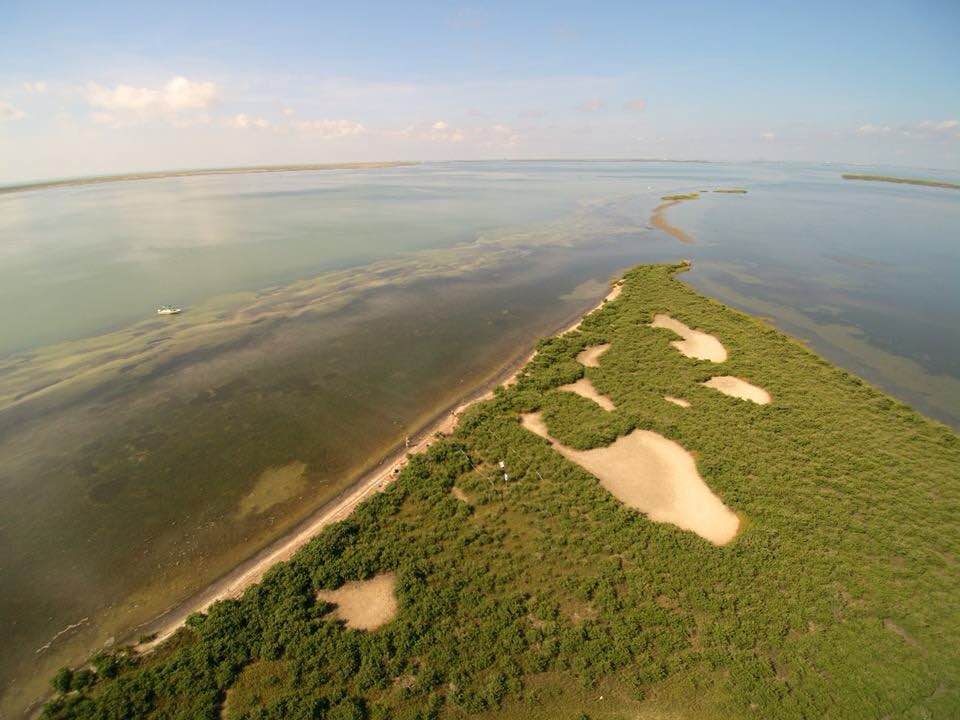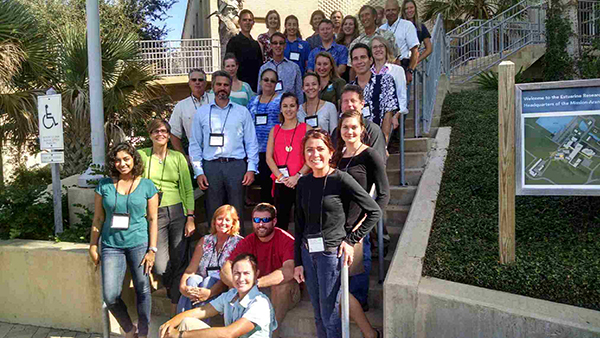 Workshop participants learned about wetlands and how the carbon stored here is being used in the carbon market and GHG offset credits. Credit: Jace Tunnell, The University of Texas Marine Science Institute. PORT ARANSAS, Texas – Did you know that the wetlands here in the Coastal Bend can hold two to four times more carbon than a mature tropical rain forest of like acreage? Our wetland habitats, like mangroves and marshes, have the ability to sequester or store massive amounts of carbon, disturbing or changing wetland habitats can release carbon dioxide into the atmosphere, which is why there is great interest in keeping the carbon there. Maintaining wetlands intact is also important because they provide valuable protection from flooding and extreme storm events. Biologists and economists have begun to put a value onto that stored carbon which is important to new market-based incentives that are being developed for greenhouse gas (GHG) reductions to help conserve these carbon storing wetlands. This new research coupled with the incentives has been nick-named “Blue Carbon.”
Workshop participants learned about wetlands and how the carbon stored here is being used in the carbon market and GHG offset credits. Credit: Jace Tunnell, The University of Texas Marine Science Institute. PORT ARANSAS, Texas – Did you know that the wetlands here in the Coastal Bend can hold two to four times more carbon than a mature tropical rain forest of like acreage? Our wetland habitats, like mangroves and marshes, have the ability to sequester or store massive amounts of carbon, disturbing or changing wetland habitats can release carbon dioxide into the atmosphere, which is why there is great interest in keeping the carbon there. Maintaining wetlands intact is also important because they provide valuable protection from flooding and extreme storm events. Biologists and economists have begun to put a value onto that stored carbon which is important to new market-based incentives that are being developed for greenhouse gas (GHG) reductions to help conserve these carbon storing wetlands. This new research coupled with the incentives has been nick-named “Blue Carbon.”
Community leaders and resource managers met yesterday, November 5th, at Mission-Aransas National Estuarine Research Reserve in Port Aransas to learn more about “Blue Carbon” and how policy and management can incorporate these incentives to help conserve coastal wetlands. The workshop will provide information to decision makers or managers of coastal areas to keep them abreast of this new “Blue Carbon” approach for conservation. “The importance of our wetlands cannot be overstated or underestimated,” said Jace Tunnell, Director of the Mission-Aransas Reserve. “The more we understand the processes of these complex systems, the more we can relate that information to our stakeholders and resource managers to use in their management decisions. We believe that understanding carbon storage within these systems is essential for sustaining our future generation’s natural resources.”
This is the final and only workshop in Texas in a series of workshops offered around the Gulf of Mexico states by the Restore America’s Estuaries and the National Estuarine Research Reserve System. The series began in Eastpoint, Florida, and continued through Moss Point, Mississippi and Naples, Florida with workshops funding support from the US Environmental Protection Agency’s Gulf of Mexico Program and the U.S. Fish and Wildlife Service Coastal Program.
 Workshop participants from throughout the Coastal Bend discussed how they can start to use blue carbon in the local development and restoration projects. Credit: Dana Sjostrom, The University of Texas Marine Science Institute.
Workshop participants from throughout the Coastal Bend discussed how they can start to use blue carbon in the local development and restoration projects. Credit: Dana Sjostrom, The University of Texas Marine Science Institute.
 Workshop participants discuss local wetlands and restoration opportunities. Credit: Dana Sjostrom, The University of Texas Marine Science Institute.
Workshop participants discuss local wetlands and restoration opportunities. Credit: Dana Sjostrom, The University of Texas Marine Science Institute.